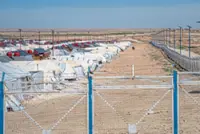A hay farmer stands in a field affected by prolonged drought in Ronda, spain.
SOUTHERN Europe is bracing for a summer of ferocious drought, with some regions already suffering water shortages and farmers expecting their worst yields in decades.
As climate change makes the region hotter and drier, years of consecutive drought have depleted groundwater reserves. Soils have become bone dry in Spain, southern France and Italy. Low river and reservoir levels are threatening this summer’s hydropower production.
Already a subscriber? Log in
Save 30% OFF The Star Digital Access
Cancel anytime. Ad-free. Unlimited access with perks.





